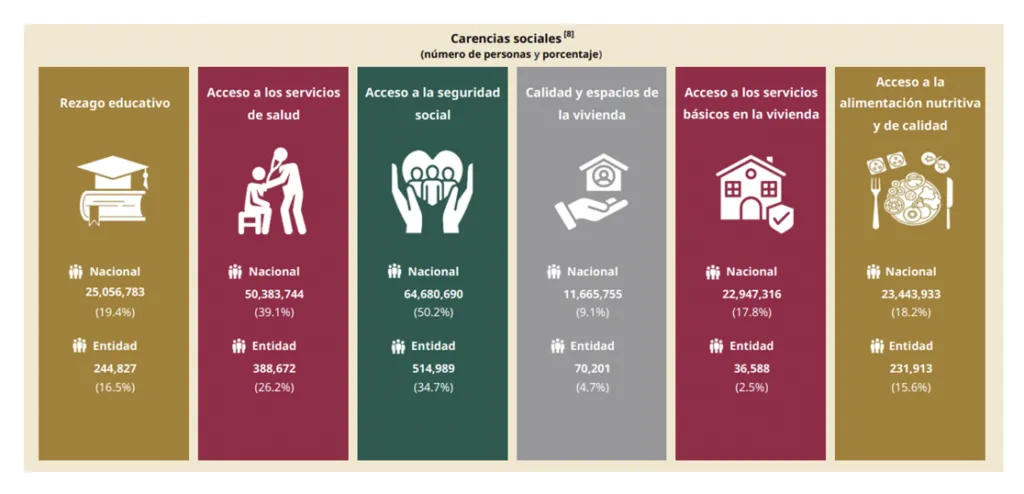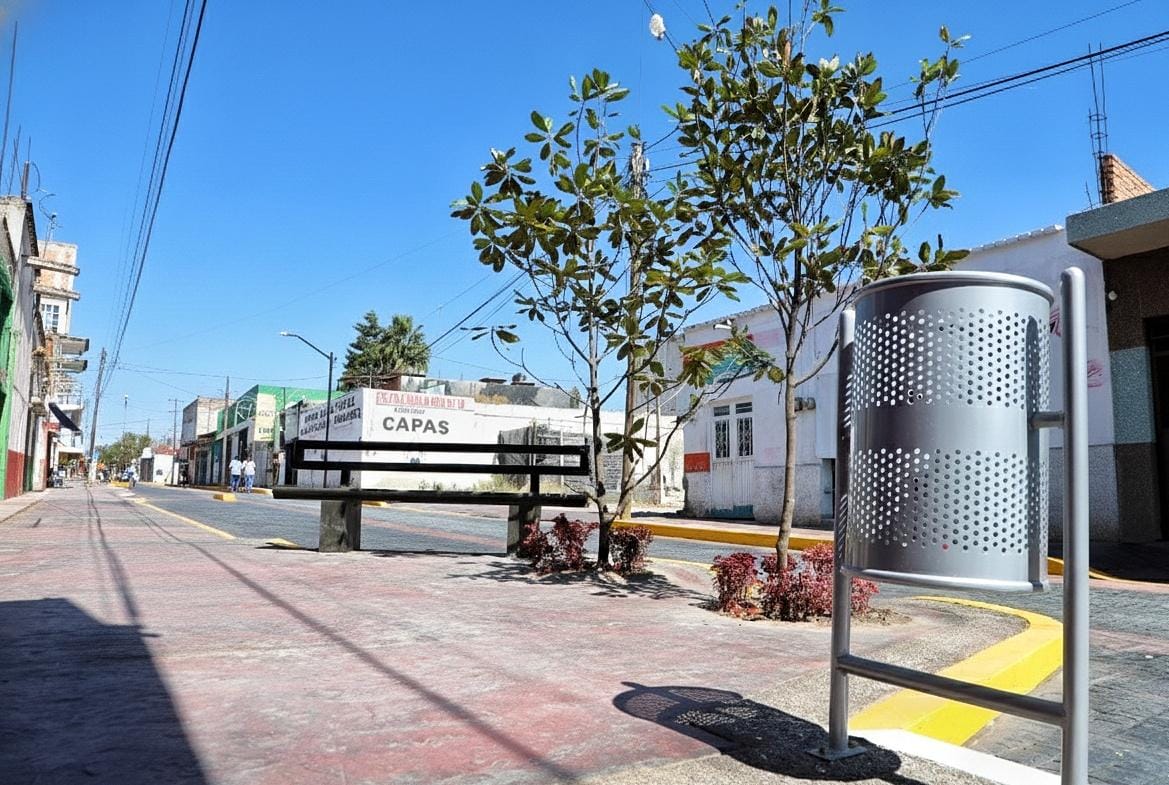Deficiencies with a Multidimensional Approach

Discover insights about deficiencies multidimensional approach and their relevance in today's dynamic business environment.
-
Educational backwardness
-
Access to health services
-
Access to social security
-
Quality and spaces of housing
-
Basic housing services
-
Access to nutritious and quality food.
Half of the population in Mexico—64.7 million people—has at least one social deficiency (CONEVAL 2025):
-
4 million do not have access to health services (39%).
-
25 million continue to have educational backwardness (19.4%).
-
4 million lack access to nutritious and quality food (18.2%).
-
9 million do not have access to basic housing services (17.8%).
-
6 million suffer from poor housing quality and space (9.1%).
In Aguascalientes, a third of the population—515 thousand people—has at least one social deficiency (CONEVAL 2025):
-
388 thousand do not have access to health services (26%).
-
245 thousand continue to have educational backwardness (16.5%).
-
232 thousand lack access to nutritious and quality food (15.6%).
-
37 thousand do not have access to basic housing services (2.5%).
-
70 thousand suffer from poor housing quality and space (4.7%).
Deficiencies by Access to Social Security
More than half of the population presented a deficiency in access to social security (50.2%, that is, 64.7 million people), making it the deficiency with the highest prevalence in the Mexican population, which could be linked to the characteristics of the labor market in the country. According to INEGI, 54.6% of the employed population was in some form of informal employment.
Aguascalientes in Salaries
In Aguascalientes, formal market salaries (the majority in the state) are generally below the national average, unlike those generated in the informal market, which tend to be higher than the national average. The basic and complementary food basket is outside the family budget, which increasingly requires more earners per household.
Educational Backwardness, a National Deficiency
The educational backwardness indicator, linked to the condition of attendance or completion of mandatory educational levels, which are ten at the national level, represents 19.4% of the population (25.1 million people). Breaking down this deficiency into its components, it was identified that the population from 3 to 21 years who did not attend school and did not have mandatory education was 15.9%, that is, 6.6 million people; In addition, the non-attendance rate for the population from 3 to 15 years was 9.2% (2.6 million people) and for the population from 16 to 21 years it was 52.1% (4.0 million people).
On the other hand, 36.7% of the population aged 22 or older born after 1998 do not have complete upper secondary education (2.3 million people). These results present a general overview of the challenge facing Mexico and Aguascalientes in educational matters, especially in population groups that are in fundamental stages of their life course for their development. Aguascalientes has 1.24% of the national population that attends schools (about 411 thousand students).
Population in Aguascalientes
Regarding inhabitants: Aguascalientes, with 1.15% of the national population, contains 1.23% of the girls and boys from 0 to 14 years; as well as 1.21% of adolescents and young people between 15 and 29 years. Its participation is lower, but it already reaches 1% of older adults over 65 years.
The economically active population of Aguascalientes dedicates itself more to industrial activities (1.6% national) than to trade and services (1.3%) compared to the country’s average. In the case of agricultural activities, the activity is lower (0.3%). This is because it does not have enough territory for this purpose, although it still has 14 agricultural products located within the national top ten.
In Aguascalientes, access to nutritious and quality food is in the red. We eat poorly despite producing enough ingredients for a healthy diet. What we produce we sell, we don’t consume it, and our habits favor very low quality and high price products.
Current national and international conditions call for prioritizing a model that leaves no one out and leaves no sector behind.
More Articles

Aguascalientes Industry Performance as of July 2025: INEGI Report Unveils Key Insights
Nov 10, 2025

Bulltick Reinforces Its Wealth Management Strategy with a Focus on Trust and Results
Nov 18, 2025

Buen Fin 2025 in San Luis Potosí: How Much Did Potosinos Spend and What Did They Buy?
Nov 19, 2025

Highway Blockades Prompt Partial Closures and Ongoing Monitoring in Guanajuato
Nov 24, 2025

Impact of Infrastructure Investments in Jesús María in 2025
Dec 3, 2025

CNTE Protest in Guadalajara on November 14: Traffic Impacts Expected
Nov 13, 2025
